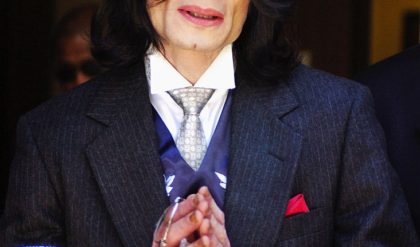Ilia Topuria, the undefeated rising star of the UFC, is rapidly gaining recognition for his exceptional boxing, elite head movement, and deadly combinations. His ability to slip, weave, and avoid incoming strikes while simultaneously landing powerful counterattacks has made him one of the most dangerous strikers in MMA today. Topuria’s head movement and fluid transitions between strikes are key components of his fighting style, allowing him to avoid damage while punishing his opponents with precision.

In this breakdown, we’ll delve into how Ilia Topuria utilizes head movement to set up his devastating combinations, and how fighters can incorporate similar techniques into their own game. If you want to fight like Topuria, mastering head movement and the art of landing his best combinations is essential.
Why Head Movement is Crucial in MMA
In MMA, head movement is often the difference between getting hit and landing a clean shot. Unlike boxing, where the focus is solely on punches, MMA involves a wider variety of strikes, including kicks, elbows, and knees. Despite this, the fundamentals of head movement—slipping, weaving, and bobbing—remain incredibly effective tools for evading strikes and controlling the pace of the fight.
/cdn.vox-cdn.com/uploads/chorus_image/image/73289346/2019424829.0.jpg)
Ilia Topuria uses head movement not only to avoid punches but also to create openings for his own attacks. His ability to make opponents miss, combined with his counterpunching ability, forces his opponents to stay cautious, thus allowing him to control the flow of the fight.
Key Head Movement Techniques of Ilia Topuria
Let’s break down some of the key head movement techniques that make Ilia Topuria such a dangerous fighter.
The Slip: Evading and Countering
The slip is one of the most effective ways to avoid an incoming punch, and Topuria is a master of this technique. A slip involves moving your head just enough to the side to avoid a punch while maintaining your stance and positioning for a counterattack. Topuria uses the slip to make his opponents miss, often followed by a devastating counterpunch.
To emulate Topuria’s slip, it’s important to:
Stay light on your feet and in a balanced stance.
When an opponent throws a punch, slip to the side (either left or right) while keeping your hands up to protect yourself.
Immediately follow the slip with a counter, whether it’s a straight right hand, a hook, or an uppercut, depending on the opening created.
Topuria often uses the slip to avoid his opponent’s jab and immediately responds with a powerful right hook or overhand, creating a fluid combination that is difficult to counter.
/cdn.vox-cdn.com/uploads/chorus_image/image/73289346/2019424829.0.jpg)
The Bob and Weave: Making Your Opponent Miss
The bob and weave is another essential head movement technique used by Topuria. This involves ducking underneath a punch (usually a hook) and coming up on the other side to land a counterattack. The bob and weave not only allows you to avoid strikes but also puts you in a position to land devastating hooks or uppercuts.
To master the bob and weave like Topuria, focus on the following:
Keep your legs bent and stay low when weaving under punches.
As you bob down, make sure to pivot your body to move off the centerline. This makes it harder for your opponent to land clean shots while setting you up for a powerful counter.
After completing the weave, immediately throw a hook, uppercut, or combination to exploit the opening your head movement has created.
Topuria often uses this technique to avoid hooks and follow up with his own powerful punches, quickly shifting the momentum in his favor.
The Head Feint: Disrupting Your Opponent’s Timing
While slipping and weaving help you avoid strikes, the head feint is a great way to throw off your opponent’s rhythm and create openings for your strikes. A head feint involves faking a movement with your head, making your opponent believe you’re about to move in a certain direction, and then attacking from a different angle.
Topuria uses head feints to draw out reactions from his opponents and create openings for powerful combinations. Here’s how you can incorporate head feints into your striking:
Use a slight dip or turn of your head to fake a slip or weave. This will often prompt your opponent to throw a punch in the direction you feint.
Immediately counter with a punch or combination as they commit to their strike.
Practice timing the feints so that your opponent reacts before you launch your attack.
Topuria’s head feints are effective because they disrupt his opponent’s timing, causing them to throw a punch too early or miss entirely, giving him the perfect opportunity to land his own counters.
/origin-imgresizer.eurosport.com/2023/06/25/3732727-75944468-2560-1440.jpg)
How to Land Ilia Topuria’s Best Combinations
Topuria’s boxing combinations are a perfect blend of fluidity, power, and timing. His ability to transition between head movement and strikes seamlessly makes him a nightmare for opponents. Let’s break down a few of Topuria’s most dangerous combinations that any fighter can incorporate into their game:
The Jab-Slip-Cross
One of the simplest yet most effective combinations in MMA, the jab-slip-cross is a great way to set up power punches while using head movement to stay safe. Here’s how to execute it:
Start with a jab to close the distance and disrupt your opponent’s rhythm.
As your opponent attempts to counter or throw a punch, slip to the side (either left or right).
Immediately follow the slip with a powerful cross (right hand for orthodox fighters) to catch them off guard.
This combination is powerful because it allows you to control the range with your jab while slipping out of danger and landing a clean, powerful cross.
The Double Hook After a Weave
Topuria is known for throwing a double hook after slipping or weaving under a punch. This combination is highly effective because it surprises your opponent with quick, powerful strikes from both hands. Here’s how to execute it:
Begin by weaving under an incoming punch, keeping your hands up to protect yourself.
As you come up from the weave, throw a quick left hook to your opponent’s head.
Immediately follow it with a right hook (or vice versa), using the momentum from your body movement to generate power.
This combination works well because the second hook often lands when your opponent is still recovering from the first one, making it hard for them to defend.
/origin-imgresizer.eurosport.com/2023/06/24/3732625-75942428-2560-1440.jpg)
The Lead Uppercut to the Overhand Right
Topuria frequently uses the lead uppercut to close the distance and set up his overhand right. This combination is effective because it targets the chin and head, while the overhand right delivers a knockout punch.
Start with a lead uppercut (left for orthodox fighters), aiming for your opponent’s chin or body.
As your opponent reacts to the uppercut, quickly follow with an overhand right, throwing it with speed and power.
This combination works well because the uppercut lifts the opponent’s head, setting them up for a devastating overhand right.

Incorporating Ilia Topuria’s Head Movement into Your Game
To fight like Ilia Topuria, the key is to focus on fluid head movement, timing, and smooth transitions between defensive maneuvers and offensive strikes. His ability to avoid damage and immediately punish his opponents is what makes him one of the most dangerous fighters in the UFC. By mastering head movement techniques like slipping, weaving, and feinting, and pairing them with powerful, fluid combinations, any fighter can elevate their striking game to new heights.
Remember, head movement is not just about avoiding punches; it’s about creating opportunities for your own strikes, disrupting your opponent’s timing, and controlling the pace of the fight. By learning to fight like Topuria, you can enhance your defensive and offensive game, making you a more dangerous and unpredictable fighter in the octagon.
Conclusion
Ilia Topuria’s head movement and striking combinations have helped him become one of the most feared boxers in MMA. His ability to evade strikes with precision and land powerful counters sets him apart from many other fighters in the division. By incorporating head movement techniques and studying Topuria’s fluid combinations, fighters can enhance their own striking and emulate one of the best rising stars in the sport.






